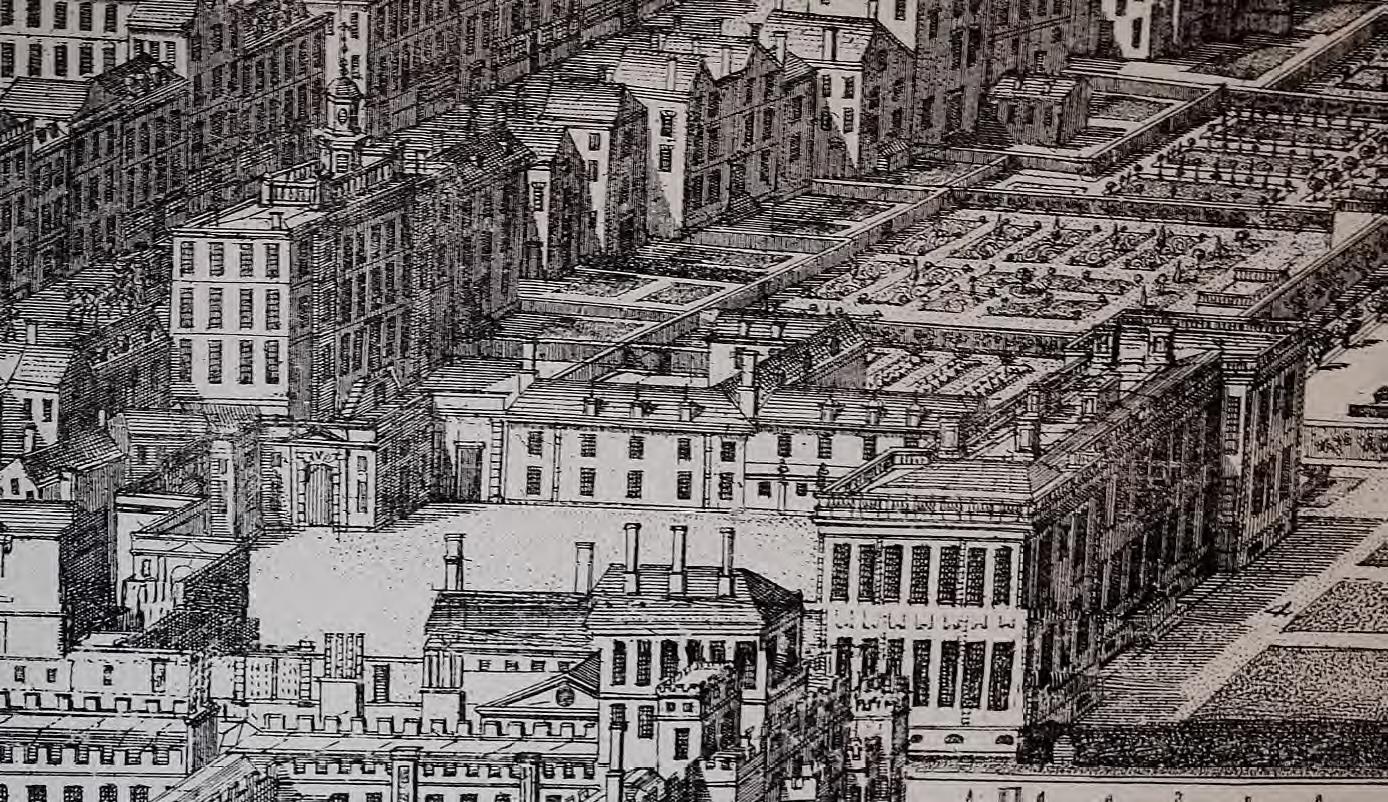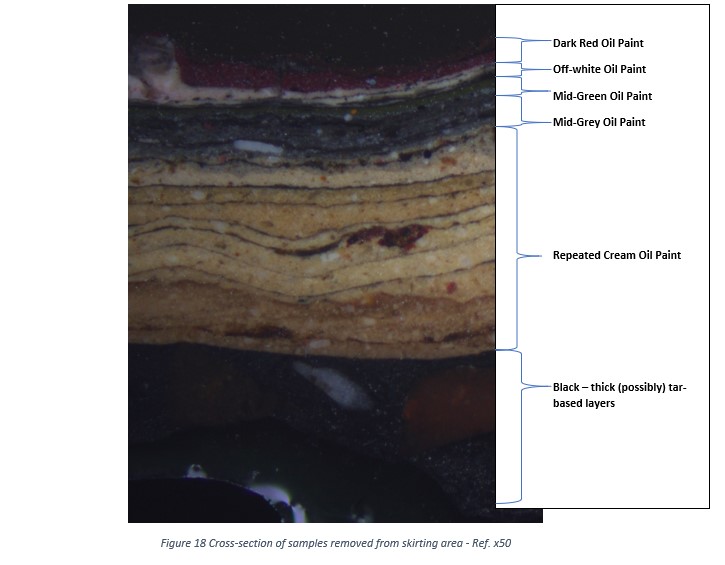Marlborough House Mews – Horse Ramp
 Kip & Knyff view of St James’s Park (1715-18)
Kip & Knyff view of St James’s Park (1715-18)
History
The north wall of Marlborough House Mews forms an historic boundary within the wider St. James’s Palace estate. The structure is attached to the forecourt walls and stable wing for Marlborough House and while not specifically referenced in the list description, it is considered a curtilage structure of the Grade I listed building. Archival evidence indicates that the line of the existing North Boundary Wall of the mews follows the former boundary line of St. James’s hunting park, though no physical evidence of Tudor brickwork survives.

Conclusions
- The north and east walls of the inclined horse ramp were originally finished in an off-white limewash.
- The bottom of both walls was fitted with a skirting which may have been lined with some type of sheeting. This appears to have been coated with a thick layer of a black tarry substance.
- Sections of this sheeting are retained on the east wall. It is suggested that further on-site investigation is carried out to identify the nature of this sheeting. It may be significant evidence of mid-nineteenth century water-proofing systems.
- Paint analysis has confirmed that the original limewash was overpainted in repeated Cream oil paint. At a later date some Green and Grey coloured decorations were applied. After these decorative phases (probably in early 20th century) the walls and skirting were painted in repeated Dark Red oil paints.
- During the later 20th century attempts have been made to remove all traces of applied finishes. The best evidence for the early decorative finishes is retained on the east wall.
